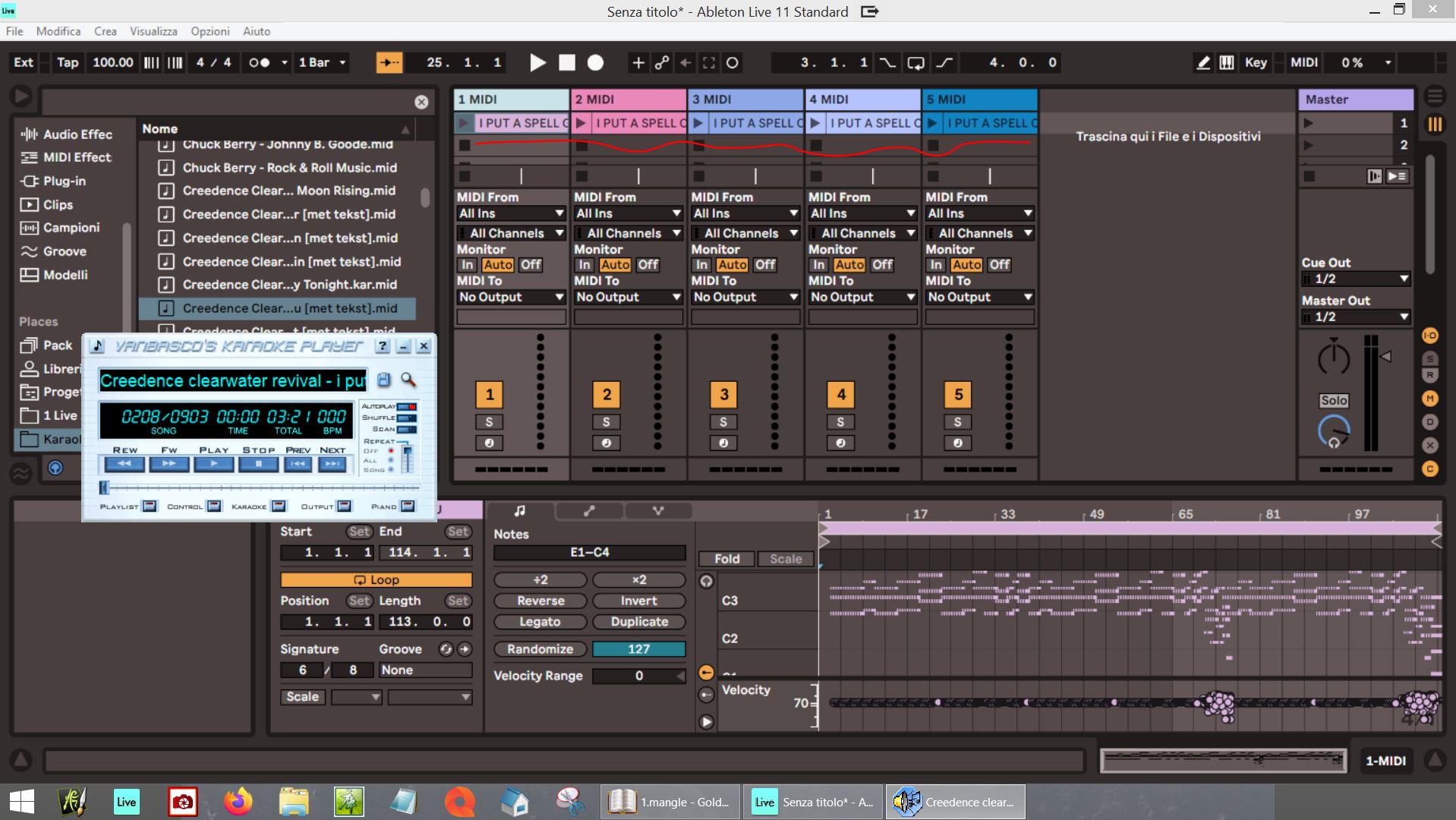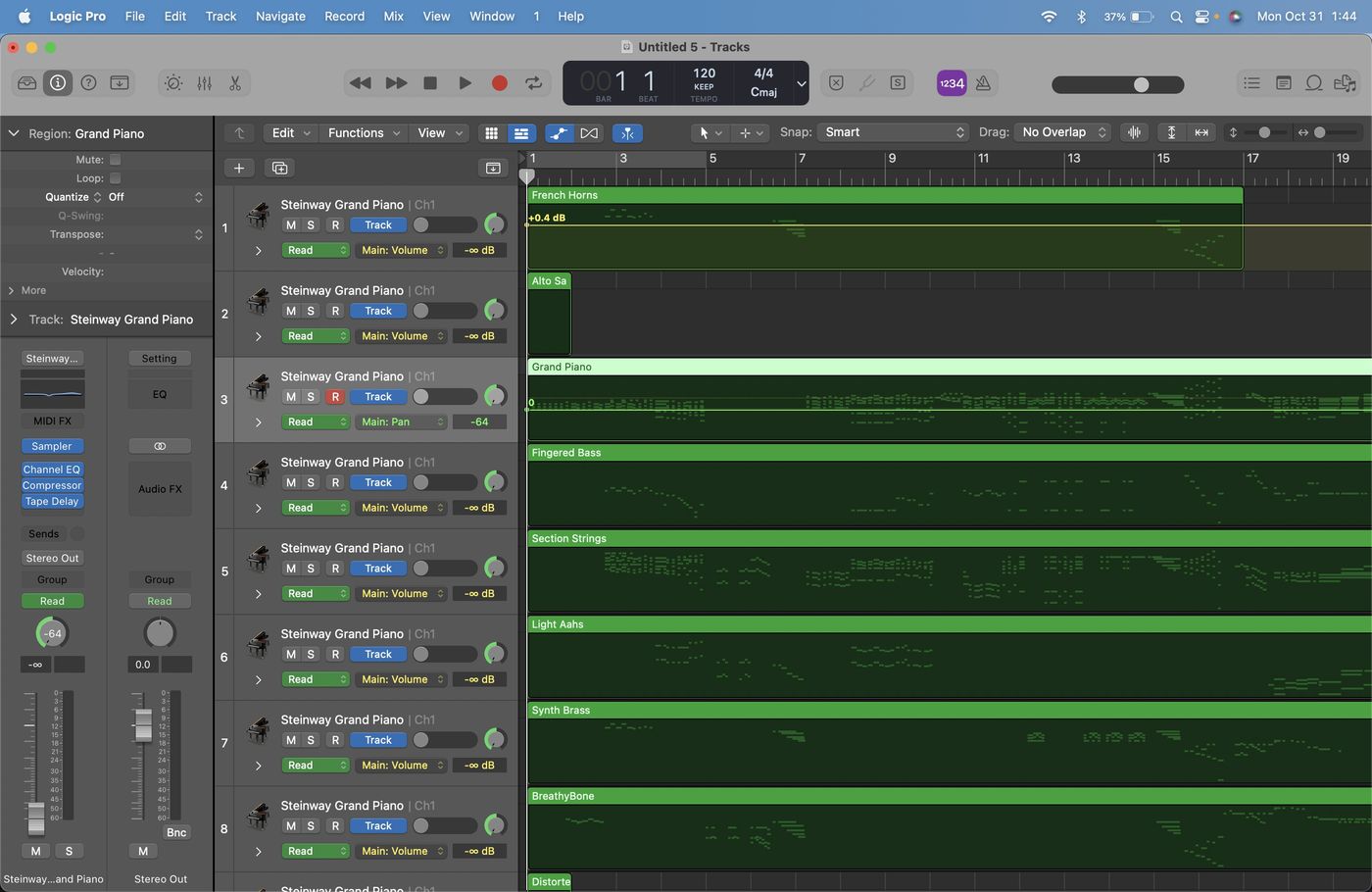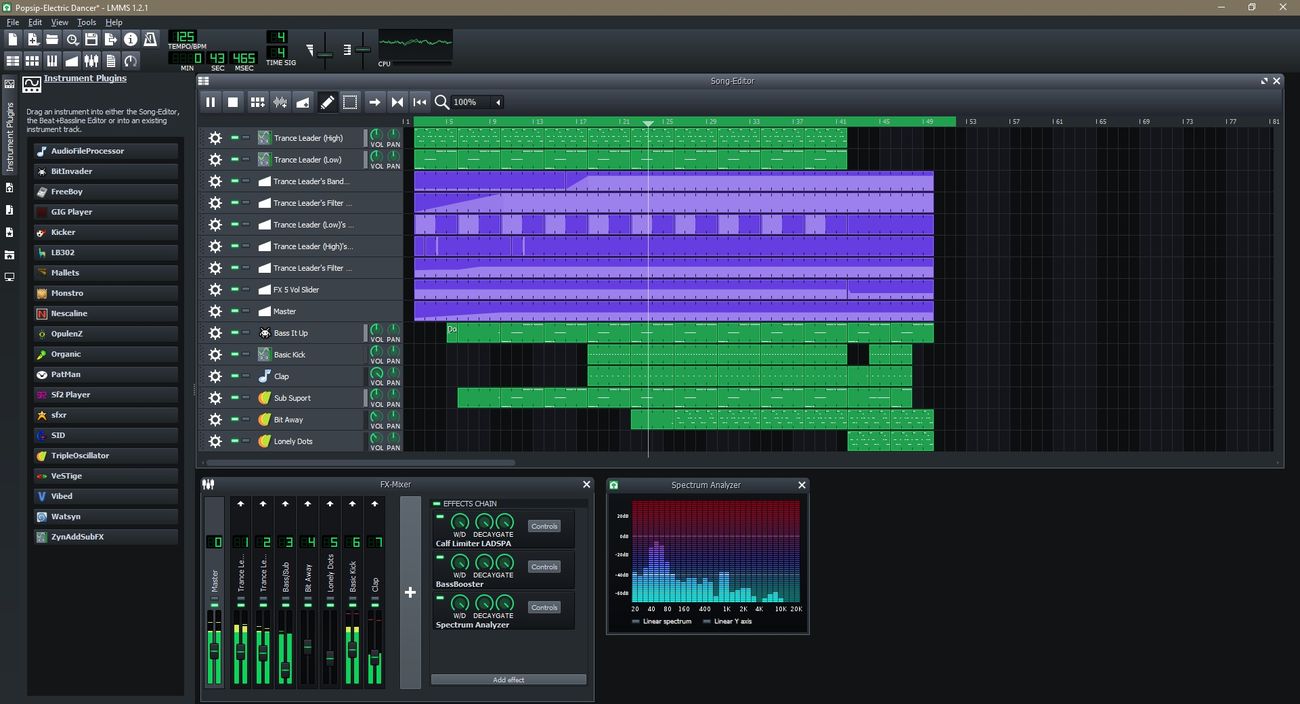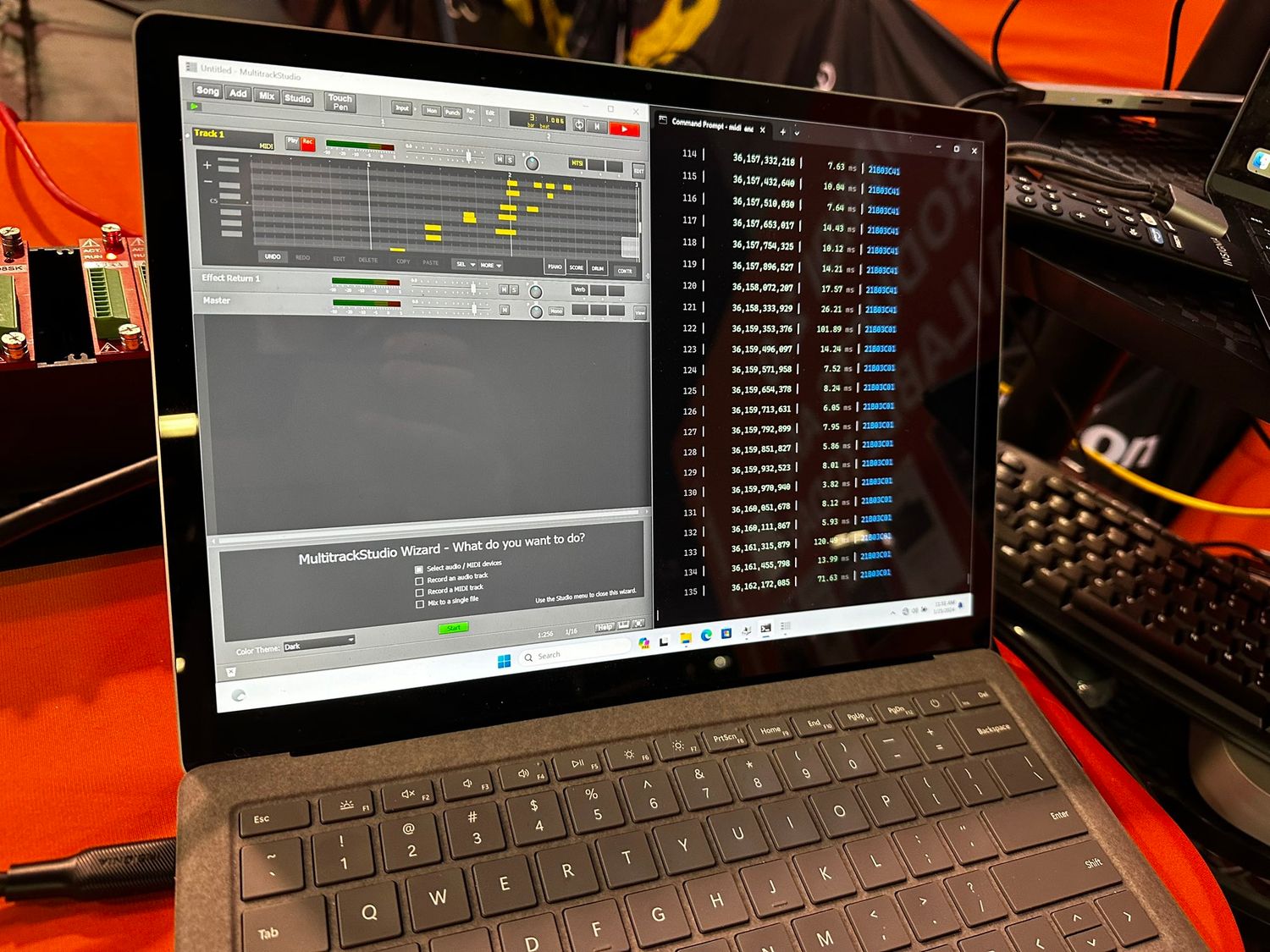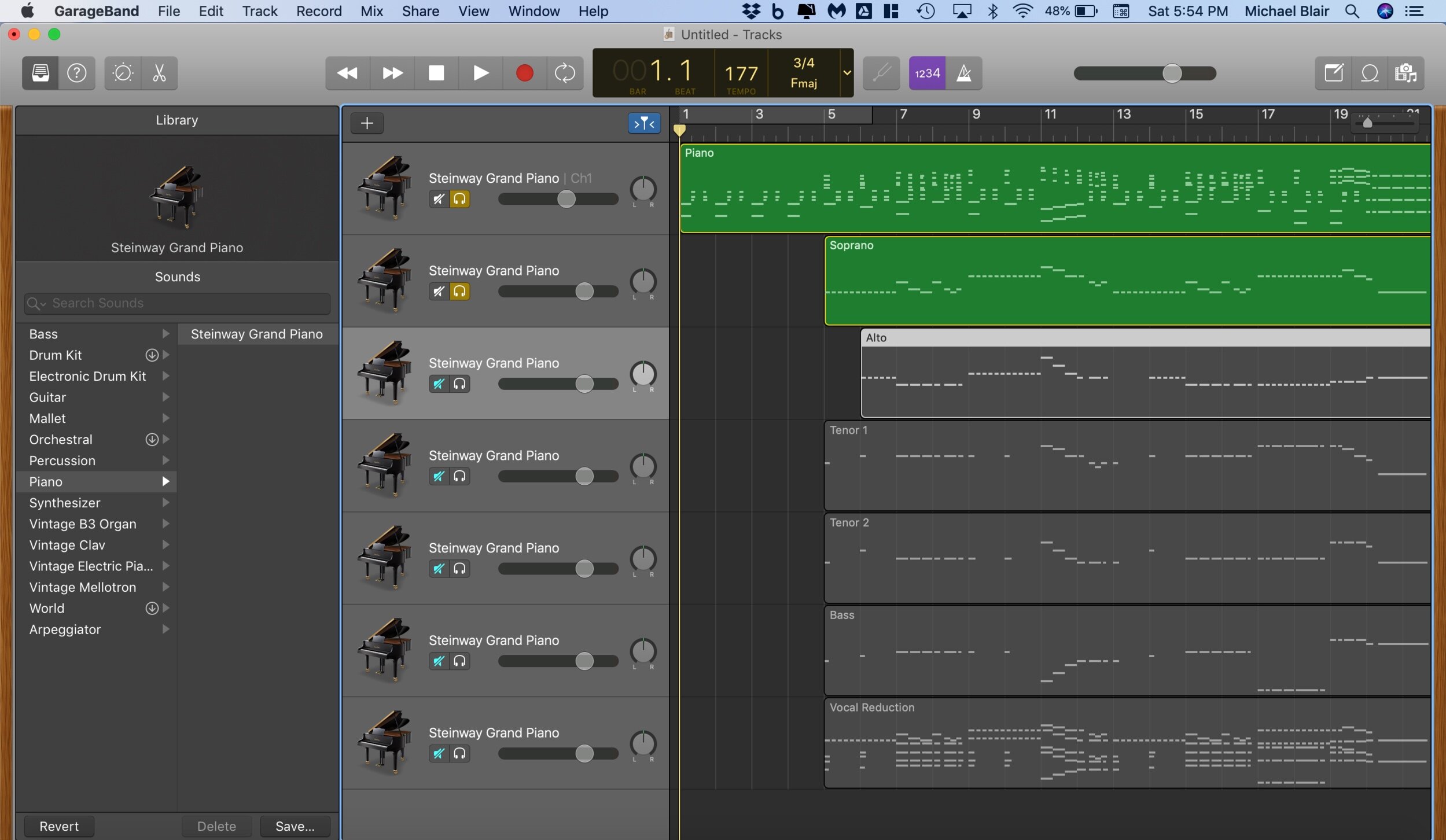Home>Production & Technology>MIDI>How To Import MIDI Files Into Musescore
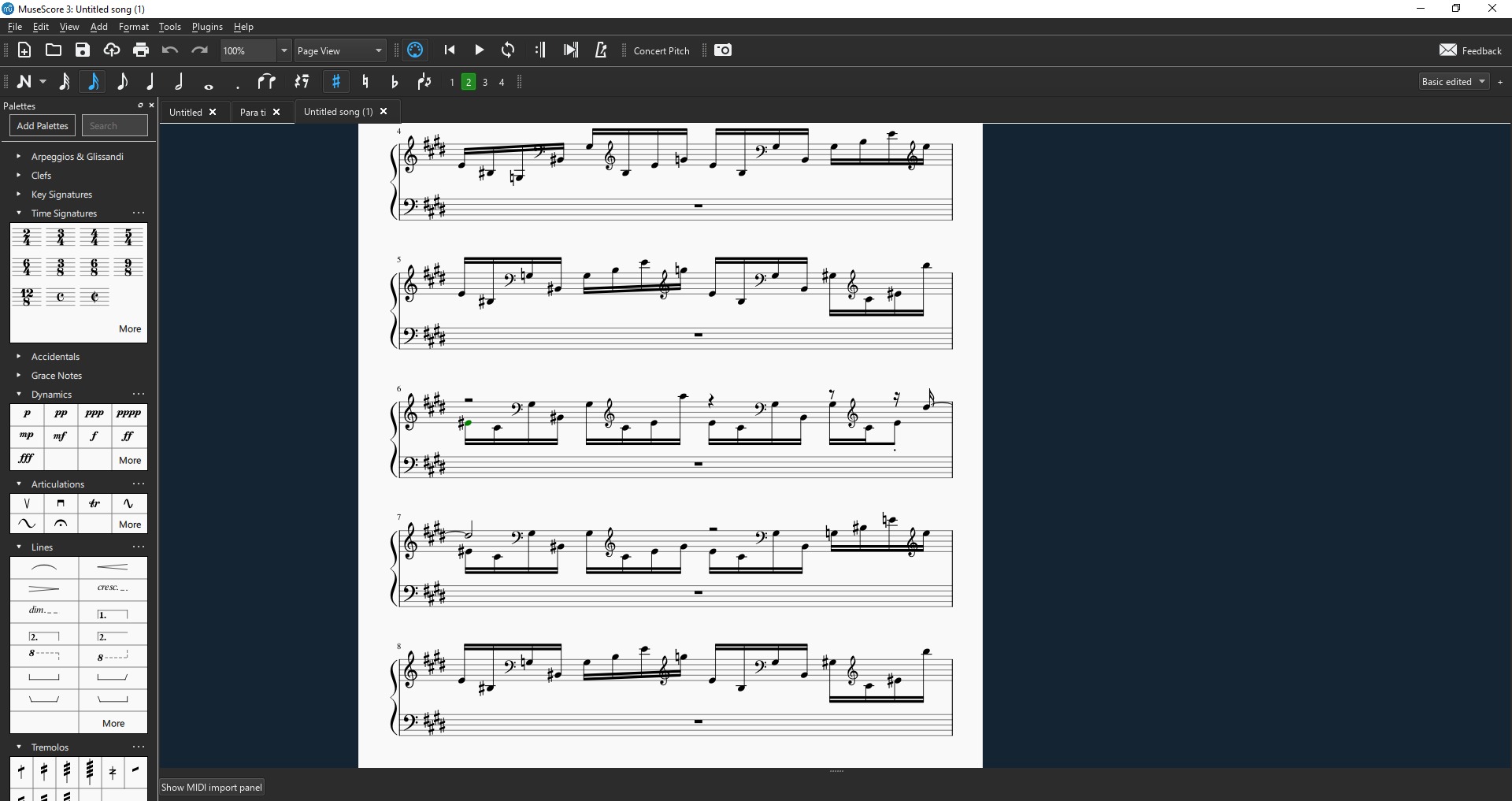

MIDI
How To Import MIDI Files Into Musescore
Modified: February 22, 2024
Learn how to easily import MIDI files into Musescore and enhance your music composition process. Follow our step-by-step guide for seamless integration.
(Many of the links in this article redirect to a specific reviewed product. Your purchase of these products through affiliate links helps to generate commission for AudioLover.com, at no extra cost. Learn more)
Table of Contents
Introduction
MIDI (Musical Instrument Digital Interface) files have been an integral part of music production and composition for decades. These versatile files contain musical data that can be interpreted by various software and hardware to produce sound, making them a popular choice for musicians, composers, and music enthusiasts alike.
One of the most popular software applications for working with MIDI files is MuseScore. MuseScore is a powerful and intuitive music notation software that allows users to create, edit, and play back musical scores. It also provides the functionality to import MIDI files, enabling users to leverage existing MIDI data within the MuseScore environment.
In this article, we will explore the process of importing MIDI files into MuseScore, providing a step-by-step guide to help you seamlessly integrate MIDI data into your musical projects. Whether you're a composer looking to arrange MIDI tracks into a full score or a musician seeking to analyze and study MIDI compositions, MuseScore's MIDI import feature can be a valuable tool in your musical endeavors.
By following the steps outlined in this guide, you will be able to harness the capabilities of MuseScore to import MIDI files with ease and precision. Whether you're a seasoned user of MuseScore or a newcomer to the world of music notation software, this tutorial will equip you with the knowledge and skills to effectively incorporate MIDI files into your musical creations.
So, let's embark on this musical journey and discover the seamless process of importing MIDI files into MuseScore, unlocking a world of creative possibilities and musical expression.
Step 1: Open Musescore
To begin the process of importing MIDI files into MuseScore, the first step is to open the MuseScore application on your computer. MuseScore provides a user-friendly interface that allows for smooth navigation and efficient access to its various functionalities. Whether you are a seasoned user or a newcomer to music notation software, launching MuseScore is the initial gateway to unlocking its diverse capabilities.
Upon opening MuseScore, you are greeted with a welcoming interface that sets the stage for your musical endeavors. The clean and intuitive layout of MuseScore ensures that users can easily locate the necessary features for working with MIDI files. The software's cohesive design enables seamless integration of MIDI data, empowering users to harness the potential of their musical compositions.
As you launch MuseScore, take a moment to appreciate the versatility and depth of the software, which serves as a canvas for musical expression. Whether you are a composer, arranger, educator, or performer, MuseScore's accessibility and functionality make it a valuable companion in your musical journey.
By opening MuseScore, you are not only gaining access to a robust music notation platform but also setting the stage for the subsequent steps in importing MIDI files. The software's responsive interface and comprehensive toolset lay the groundwork for a seamless and efficient MIDI import process, ensuring that your musical ideas can effortlessly transition into the digital realm.
With MuseScore now at your fingertips, you are poised to embark on the next steps of importing MIDI files, delving into a world of musical exploration and creativity. As the gateway to a myriad of musical possibilities, MuseScore stands ready to accompany you on your quest to integrate MIDI data into your musical projects.
In the following steps, we will delve deeper into the process of importing MIDI files into MuseScore, building upon the foundation laid by the simple yet crucial act of opening the software. Let's continue our journey into the realm of musical expression and innovation as we navigate the intricacies of MIDI file importation within MuseScore.
Step 2: Click on "File" and Select "Import"
Once MuseScore is launched and ready for your musical input, the next pivotal step in importing MIDI files is to navigate to the "File" menu located at the top-left corner of the interface. This fundamental action serves as the gateway to accessing a range of essential functions within MuseScore, including the ability to import MIDI files seamlessly.
Upon clicking on the "File" menu, a dropdown list of options unfolds, presenting a comprehensive array of commands and operations for managing your musical scores and data. Among these options, you will find the crucial function labeled "Import." This command is the key to integrating MIDI files into the MuseScore environment, allowing you to leverage existing musical data and expand the scope of your compositions.
By selecting the "Import" option from the "File" menu, you are signaling MuseScore to prepare for the influx of MIDI data, setting the stage for a streamlined and efficient import process. This pivotal action serves as the bridge between your existing MIDI files and the rich musical canvas offered by MuseScore, paving the way for seamless integration and creative exploration.
The intuitive placement of the "Import" function within the "File" menu reflects MuseScore's commitment to user-friendly design and accessibility. Whether you are a seasoned composer, a music educator, or an aspiring musician, the straightforward nature of accessing the "Import" command ensures that importing MIDI files remains a straightforward and hassle-free endeavor.
As you click on "File" and select "Import," you are embarking on a transformative journey, where the boundaries between MIDI data and musical notation begin to blur. MuseScore's commitment to empowering users to harness the potential of MIDI files is exemplified in this simple yet impactful action, laying the groundwork for a seamless transition from digital musical data to expressive musical scores.
With the "Import" command now initiated, the stage is set for the next phase of the MIDI import process within MuseScore. As we delve deeper into the intricacies of importing MIDI files, the foundational step of accessing the "Import" function serves as a testament to MuseScore's dedication to facilitating a harmonious fusion of technology and musical creativity.
In the subsequent steps, we will unravel the nuances of choosing and adjusting MIDI files within MuseScore, building upon the foundational action of clicking on "File" and selecting "Import." This pivotal moment marks the inception of a musical symbiosis, where digital data converges with artistic expression, culminating in a harmonious blend of technology and musicality.
Step 3: Choose the MIDI File You Want to Import
After initiating the MIDI import process within MuseScore by accessing the "File" menu and selecting "Import," the next pivotal step involves choosing the specific MIDI file that you intend to import into the software. This critical phase marks the convergence of digital musical data and the expansive capabilities of MuseScore, setting the stage for a seamless integration of MIDI compositions into your musical projects.
Upon selecting the "Import" option, MuseScore prompts you to navigate to the location on your computer where the desired MIDI file is stored. This straightforward yet crucial action empowers you to identify and select the MIDI composition that you wish to incorporate into MuseScore, thereby opening the door to a world of creative possibilities and musical exploration.
As you browse through your computer's directories to locate the targeted MIDI file, take a moment to envision the transformative impact of integrating this digital musical data into MuseScore. Whether you are working on a new composition, arranging existing MIDI tracks, or analyzing musical scores, the process of choosing the MIDI file signifies a pivotal juncture where technological prowess converges with artistic expression.
MuseScore's intuitive interface ensures that the selection of MIDI files remains a user-friendly and straightforward endeavor, catering to the diverse needs of musicians, composers, and educators. The software's commitment to accessibility and efficiency shines through as you navigate through your computer's files to pinpoint the MIDI composition that aligns with your creative vision.
With the MIDI file now chosen and poised for importation into MuseScore, you stand at the threshold of a harmonious fusion between digital musical data and the expressive realm of musical notation. The act of selecting the MIDI file embodies a seamless transition from the digital landscape of musical composition to the dynamic environment offered by MuseScore, where musical ideas take shape and flourish.
As we progress through the steps of importing MIDI files into MuseScore, the process of choosing the MIDI file serves as a testament to the software's commitment to facilitating a cohesive and intuitive user experience. With the MIDI file now identified and awaiting integration, the stage is set for the subsequent steps of the importation process, where the chosen musical data will seamlessly converge with MuseScore's rich musical canvas.
In the forthcoming stages, we will delve deeper into the intricacies of importing MIDI files, building upon the foundational step of choosing the MIDI file that resonates with your creative aspirations. As the journey unfolds, the seamless integration of MIDI compositions into MuseScore will pave the way for boundless musical exploration and innovative expression, culminating in a harmonious synergy between technology and artistic vision.
Step 4: Adjust Settings (Optional)
Upon selecting the MIDI file for importation into MuseScore, the optional yet pivotal step of adjusting settings presents itself, offering users the opportunity to fine-tune various parameters to suit their specific musical preferences and requirements. This phase of the MIDI import process underscores MuseScore's commitment to providing users with flexibility and control, empowering them to tailor the imported MIDI data to align seamlessly with their creative vision.
As you delve into the realm of adjusting settings within MuseScore, a myriad of options unfolds, allowing for precise customization of the MIDI file's characteristics. One of the key settings that users may encounter is the tempo adjustment, enabling them to refine the playback speed of the imported MIDI composition. This feature proves invaluable for musicians and composers seeking to adapt the tempo of the MIDI data to align with their desired musical interpretation, ensuring a seamless integration into their overall composition.
Furthermore, MuseScore offers users the ability to adjust instrument assignments, providing the flexibility to reassign MIDI channels to specific instruments within the software's extensive library. This granular control over instrument mapping allows for a tailored approach to interpreting MIDI data, granting users the freedom to experiment with different instrumentations and sonic textures to enrich their musical arrangements.
In addition to tempo and instrument assignments, MuseScore's settings adjustment phase may encompass parameters such as dynamics, articulations, and playback options, affording users a comprehensive toolkit to refine the nuances of the imported MIDI composition. Whether it involves accentuating specific musical articulations or calibrating dynamic variations, the settings adjustment phase serves as a gateway to personalized musical expression within MuseScore.
The optional nature of this step underscores MuseScore's commitment to accommodating a diverse range of musical workflows and creative endeavors. Whether users opt to delve into the intricacies of settings adjustment or proceed with the default configurations, MuseScore's user-centric approach ensures a seamless and intuitive experience throughout the MIDI import process.
As users navigate through the settings adjustment phase, they are empowered to sculpt the imported MIDI data according to their artistic inclinations, fostering a harmonious blend of technological precision and creative expression. This phase serves as a testament to MuseScore's dedication to providing users with the tools and flexibility to realize their musical visions within the software's dynamic and immersive environment.
In the subsequent stages, we will delve deeper into the final step of importing MIDI files into MuseScore, building upon the foundational phase of adjusting settings to refine the imported MIDI data. As users progress through this pivotal phase, they are poised to unlock a world of creative possibilities and musical innovation within MuseScore's versatile and accommodating framework.
Step 5: Click "OK" to Import the MIDI File
After meticulously selecting and fine-tuning the settings for the MIDI file within MuseScore, the culminating step involves clicking the "OK" button to initiate the importation process. This pivotal action serves as the definitive gateway to seamlessly integrating the chosen MIDI composition into MuseScore, marking the transition from digital musical data to a vibrant and expressive musical score.
Upon clicking "OK," MuseScore springs into action, deftly processing the selected MIDI file and incorporating it into the software's musical environment. This seamless transition embodies the software's commitment to providing users with a frictionless and intuitive experience, ensuring that the imported MIDI data seamlessly aligns with the user's creative vision.
As the importation process unfolds, users are greeted with a sense of anticipation, knowing that their chosen MIDI composition is about to become an integral part of their musical journey within MuseScore. The software's responsiveness and efficiency during this phase underscore its dedication to facilitating a seamless fusion of technology and artistic expression, empowering users to realize their musical aspirations with ease.
With the MIDI file now integrated into MuseScore, users gain access to a diverse array of tools and functionalities to further enhance and refine their musical scores. Whether it involves refining notation, adjusting playback settings, or exploring dynamic musical interpretations, MuseScore's comprehensive platform provides the ideal canvas for users to breathe life into their imported MIDI compositions.
As the importation process concludes, users are greeted with a sense of accomplishment, knowing that their chosen MIDI file has seamlessly transitioned into the rich and dynamic realm of MuseScore. This pivotal moment marks the inception of a harmonious fusion between digital musical data and the expressive landscape of musical notation, underscoring MuseScore's pivotal role in nurturing creative expression and innovation.
In the wake of importing the MIDI file into MuseScore, users are poised to embark on a journey of musical exploration and creative discovery, leveraging the software's robust capabilities to realize their artistic vision. This transformative process embodies MuseScore's commitment to empowering users to seamlessly integrate MIDI compositions, fostering a harmonious synergy between technology and musical expression.
In the subsequent stages, users can delve into the intricacies of working with the imported MIDI file within MuseScore, leveraging the software's diverse features to further refine and expand upon their musical creations. As the journey continues, the seamless integration of MIDI files into MuseScore paves the way for boundless musical exploration and innovative expression, culminating in a harmonious symbiosis between technology and artistic vision.
Conclusion
In conclusion, the process of importing MIDI files into MuseScore represents a seamless fusion of technological innovation and artistic expression, culminating in a harmonious convergence of digital musical data and the dynamic realm of musical notation. Through a series of intuitive and user-centric steps, users can seamlessly integrate MIDI compositions into MuseScore, unlocking a world of creative possibilities and musical exploration.
As users embark on the journey of importing MIDI files into MuseScore, they are greeted with a user-friendly interface that serves as a gateway to a myriad of musical endeavors. The simple act of opening MuseScore sets the stage for a transformative experience, where musical ideas and digital data converge to form expressive musical scores.
Navigating through the pivotal steps of clicking on "File" and selecting "Import," choosing the specific MIDI file, adjusting settings, and ultimately clicking "OK" to initiate the importation process, users are empowered to seamlessly transition from digital musical data to vibrant and expressive musical compositions within MuseScore.
The optional phase of adjusting settings underscores MuseScore's commitment to providing users with flexibility and control, allowing them to tailor the imported MIDI data to align seamlessly with their creative vision. This phase serves as a testament to MuseScore's dedication to facilitating a cohesive and intuitive user experience, ensuring that users can sculpt the imported MIDI data according to their artistic inclinations.
Upon importing the MIDI file into MuseScore, users gain access to a comprehensive platform that provides a diverse array of tools and functionalities to further enhance and refine their musical scores. Whether it involves refining notation, adjusting playback settings, or exploring dynamic musical interpretations, MuseScore's dynamic environment empowers users to breathe life into their imported MIDI compositions.
In the wake of importing the MIDI file into MuseScore, users are poised to embark on a journey of musical exploration and creative discovery, leveraging the software's robust capabilities to realize their artistic vision. This transformative process embodies MuseScore's commitment to empowering users to seamlessly integrate MIDI compositions, fostering a harmonious synergy between technology and musical expression.
As the journey continues, the seamless integration of MIDI files into MuseScore paves the way for boundless musical exploration and innovative expression, culminating in a harmonious symbiosis between technology and artistic vision. Whether users are composing, arranging, or studying musical scores, MuseScore's MIDI import feature stands as a testament to the software's dedication to nurturing creativity and musical innovation.

